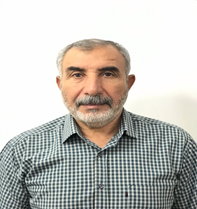
Forests in the desert without irrigation… From the desert of Egypt
Prof. Dr. Abdul Wahab Khudair Al-Obaid
Department of Soil Sciences and Water Resources
Recently, large areas of the Spanish desert, the United Arab Emirates and Egypt have been transformed into forests of trees depending on rainwater. It is known that there is an interruption of the rainy season during which the upper horizons of the soil surface dry up, and the deeper horizons (more than two meters) retain some moisture from the rainwater that has sunk to the depths, and this moisture content increases in deeper. The drought period of the upper soil horizons makes cultivation impossible without irrigation, especially the planting of trees.
The solution to this problem came through the so-called buried box irrigation (filtration through the filament), which is a Dutch idea. The box consists of three main parts: the basin (the tank) with a capacity of 16 litres (which is similar to a circular cake mould) with a hole in the middle, the insulating panel, and the cover. In addition to a filament for filtering water from the tank to the root zone. The diameter of the box is 50 cm with height of 25 cm. The rate of leaching from the filament is 50 cm per 3 days, and this lasts for about 10 months, allowing the water to go deep to approximately 2 meters below the box.
The benefit of the insulating panel is to condense the water vapor of the tank when the temperature varies between it and the surrounding atmosphere, and then return it in the form of drops to the tank. A hole is dug enough for the area of ??the base of the box, with a depth of 10 cm, and in the middle a hole for the sapling with a depth of 40 cm. After planting the sapling, the box is placed over it where it comes out of its middle hole, from which the filament hangs, touching the surface of the soil and its other end inside the water in the tank. After that, the tank is filled and the plant is watered for the only time with about 4 litres. This to maintain low temperatures which reduces evaporation rates and maintain moisture in the root zone. The cover is designed to collect rainwater and bring it down to the inside of the box.
This leaching rate is not sufficient for the ideal growth of the roots, so we notice a near cessation of growth. During this period, the roots extend more and more, searching for water. It may take two seasons for these roots to reach the wet area, which is often two meters or more deep. Then the growth begins significantly, and this is an indication that the plants are able to grow without these boxes. However, these boxes are lifted and used again in another location, as they can be reused 10-20 times.
